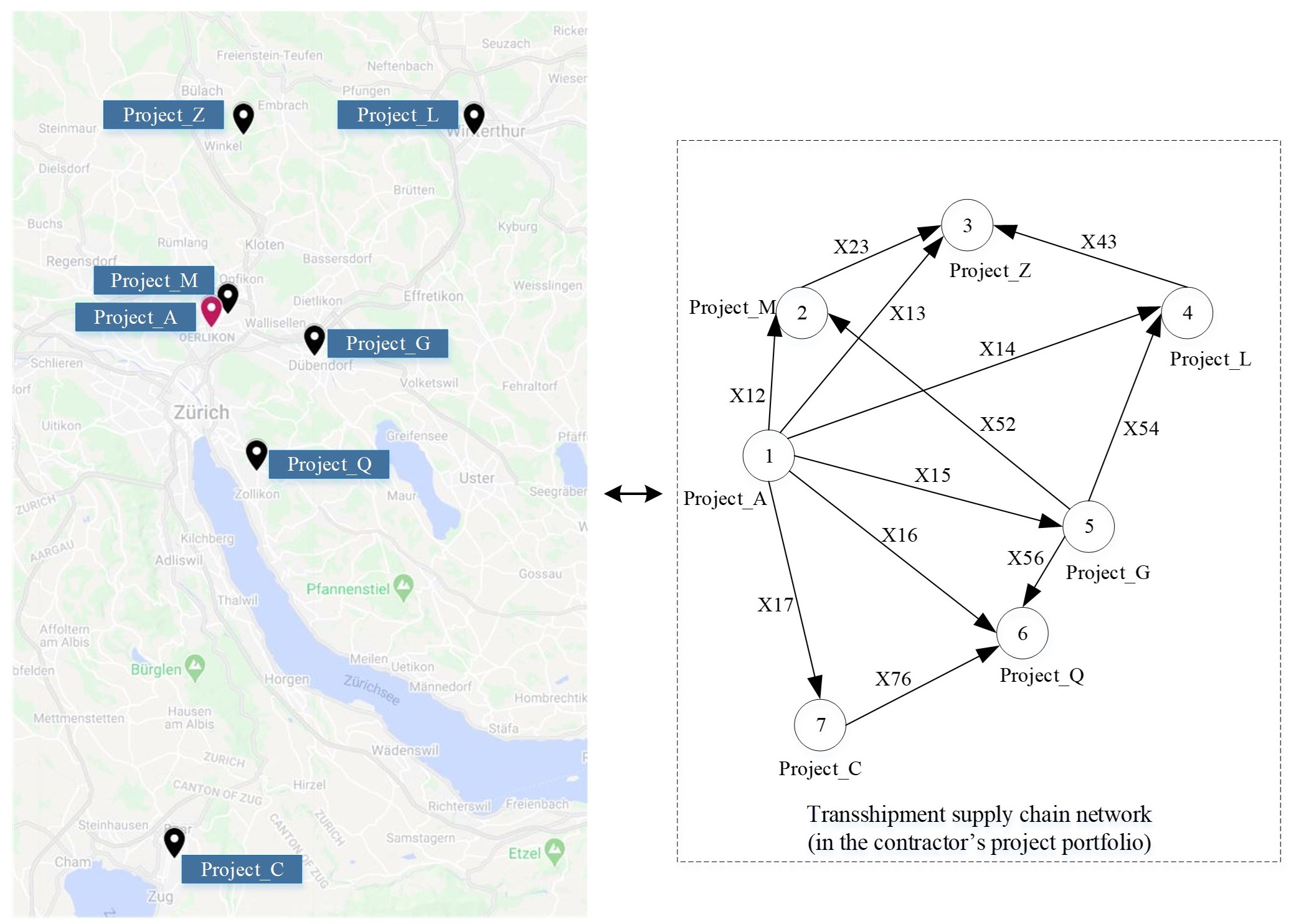Optimizing supply chain of a project portfolio
This research project proposed a two-step transshipment approach to help the contractor to conduct lateral sharing of unused perishable materials in a project portfolio, where the supply and demand fluctuation could be well managed with minimal cost. The first step is to link 3D models in BIM authoring software with task information to calculate the daily net material supply and demand quantities regarding transshipment. The second step is to use this data to construct a math model, which aims to optimize the material quantities to be transshipped within the project portfolio. The evolutionary heuristic algorithm is used to solve the math model and find optimal solutions under minimal material transportation cost. To test the usefulness of the approach, an example project portfolio of seven building projects was used to derive the transshipment quantities of unused materials between projects. Results indicate an approximate 52% of cost-saving compared to a normal situation when unused perishable materials are wasted on site. This cost-saving should be viewed as a substantial improvement for the existing practice of coordination of material flows. The sensitivity analysis of model parameters also indicates that the optimal solutions found from the proposed approach were statistically robust and stable.
The transshipment approach could open a new way for contractors to cope with over-ordered and unused perishable materials. It helps develop contractors’ preparedness and responsiveness to supply chain disruptions and demand fluctuations during dynamic construction processes. Ultimately, this could accelerate the project timeline and reduce material costs for an overall portfolio of projects. More real-world projects should be tested in the future to validate the usefulness of the approach. Important operational constraints, such as the complex contractual relationships and stakeholders’ willingness to share cost data, should be thoroughly investigated case by case to improve the practicality of the approach. Additionally, the success of the heuristic algorithms is highly dependent on the specific problem formulation case by case; therefore, a variety of heuristic algorithms need to be experimented to validate their fitness for different problem settings.

link to the full research paper